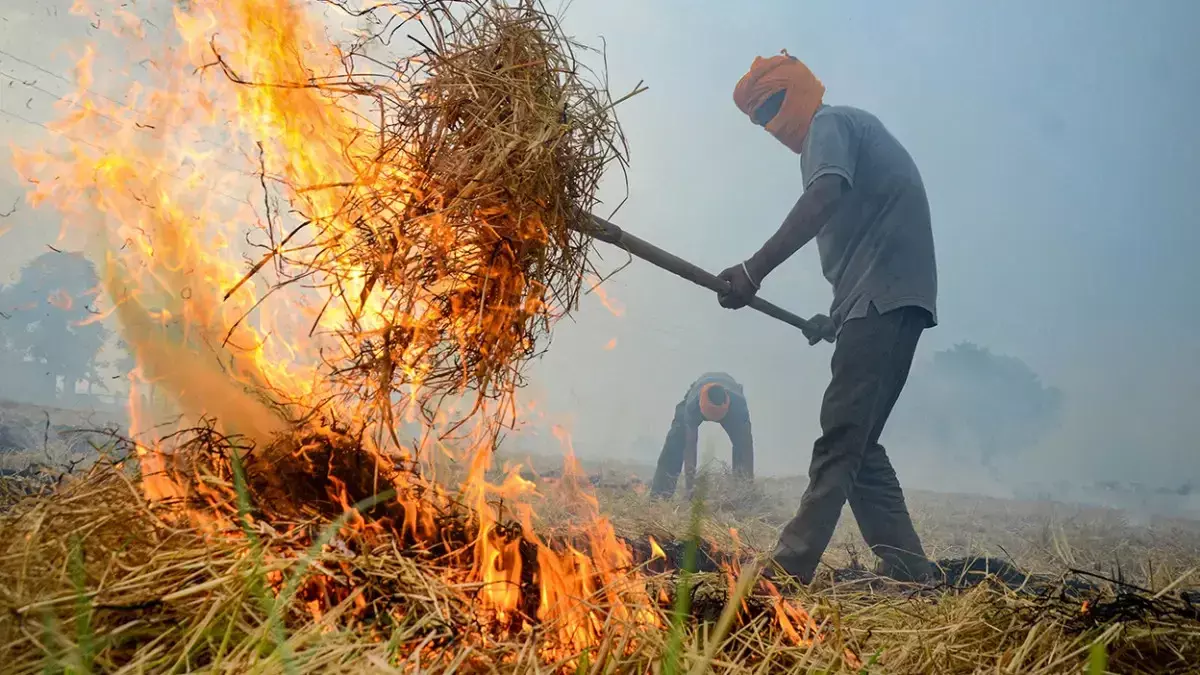Dismantling the barriers
As South Asia continues to grapple with crop residue burning, there is a need to remove constraints that limit the efficacy of existing technologies and systems

Agricultural growth over the decades has caused enormous pressure on environmental health across the globe, particularly in South Asia. Prominent among the problems caused by it is crop residue burning. Burning of crop residue is a major reason for severe air pollution in the Indo-Gangetic plains. It has also contributed to global warming and climate change, and led to the loss of fertility of agricultural land. Besides carbon dioxide, crop residue burning also leads to the emission of carbon monoxide, nitrogen oxides, methane and nitrous oxide gases and discharge of ash.
Technological advances and use of machinery for crop harvesting leave behind large quantities of crop residues. This has further worsened the problem because the leftover residue is burnt by farmers as the cheapest and easiest method to clear the fields due to the misconception that the burning of crop residue enhances soil fertility and helps in controlling weeds, insects and pests.
In India, the crop residue burnt in the fields in different states is highly variable, depending on the usage pattern in various states. As per a study by UN body ESCAP and others, in India, crop residues which are subjected to burning range between as low as eight per cent to 80 per cent for rice crop across states. In the states of Haryana, Himachal Pradesh and Punjab, 80 per cent of rice straw was burnt in the fields, followed by Karnataka (50 per cent) and Uttar Pradesh (25 per cent). The study shows that currently, 75–80 per cent of rice-wheat area in Punjab is harvested with combines.
Among the different crop residues in India, major contributions were from rice (43 per cent), wheat (21 per cent) and sugarcane (19 per cent). The problem is more severe in areas with irrigated agriculture, particularly in the mechanised rice-wheat system of Northwest India. During recent years, the burning of crop residues has also resulted in scarcity of fodder.
In Pakistan, the burning of harvested straw has also risen. Due to challenging management practices, limited resources of the farming community, and a short window for seeding the next crop, rice straw accounts for a substantial percentage of residue burning in Pakistan. According to the survey, rice straw burning is the most common activity in Pakistan’s Punjab province, accounting for 72 per cent of all practices, virtually like in India. Burning sugarcane trash is also a common practice in Pakistan. This practice is however coming down due to the imposition of hefty penalties.
The ESCAP study said that open-field burning of rice straw was not widely practiced in Bangladesh, as a major part of the crop was harvested manually and carried to the threshing yard for mechanical threshing. However, the recent growing trend is that the farmers are considering the option of straw burning with the increasing use of combine harvesters and reapers. Farmers in Bangladesh choose to burn long types of straw, such as creeper vegetables and poor-quality rice, wheat and maize straw residues, as these cannot be used as animal feed or domestic fuel. In Nepal, though statistical figures are not readily available, studies carried out about five years ago showed that the highest residue burning occurred in the Terai region (91 per cent), followed by the hills (6.4 per cent) and the mountainous regions.
In India, the government woke up after the Supreme Court, in February 2020, directed the Centre and state governments to take strong measures to stop stubble burning. It also presented an action plan. The Centre and state governments have launched programmes to help farmers buy new equipment through subsidies. These equipment include a straw-management system attached with combine harvester, seeder, paddy straw chopper, and super seeder. Some of these machineries are also being exported to neighbouring countries. Methods and means are also being adopted, especially in Punjab, to use crop residue as fodder for animals or for generation of electricity and promoting gasification technology.
However, the testing codes to ensure quality of the machinery vary across countries and even in Indian states. Some may not even have a testing system or facilities in place. This creates a trade bottleneck. Hence, improved linkages should be promoted amongst agricultural machinery manufacturers in South Asia. Supply chains also need to be developed in these countries. Management of crop residues can be economically viable if good supply chain management exists in the target countries, including cross-border supply chain management to take advantage of local demand/supply gaps. Policies and coordination are needed by the respective governments to encourage private investment in crop residue collection.
Stressing on imparting training to farmers on these new equipment, the ESCAP study has suggested organising joint skill development programmes for farmers and farm labourers to adopt and adapt mechanisation solutions for managing crop residues. The SAARC Agriculture Centre (SAC) also has a mandate to disseminate technical information from South Asia to strengthen agricultural research, development and innovations. Several other technologies and systems have also been developed for mechanisation of crop residue management in the South Asian region. But looking at the level of adoption of these technologies at the ground level, the scenario is challenging. A series of constraints exist in using crop residue management machinery. The issues of appropriate funding, R&D, and training and monitoring interventions are needed to overcome them.
Views expressed are personal



